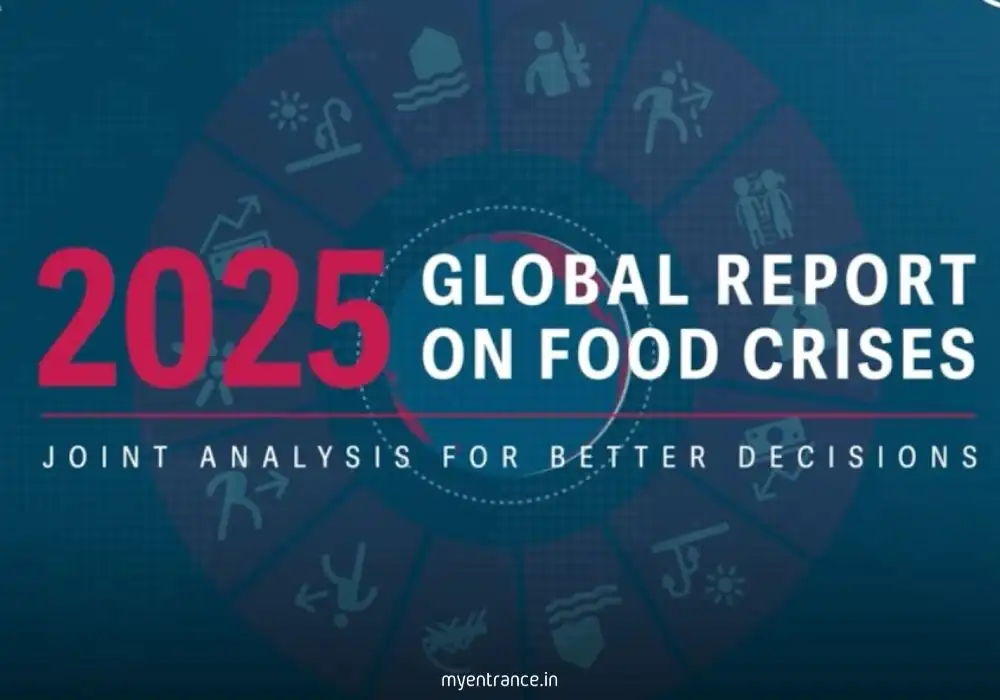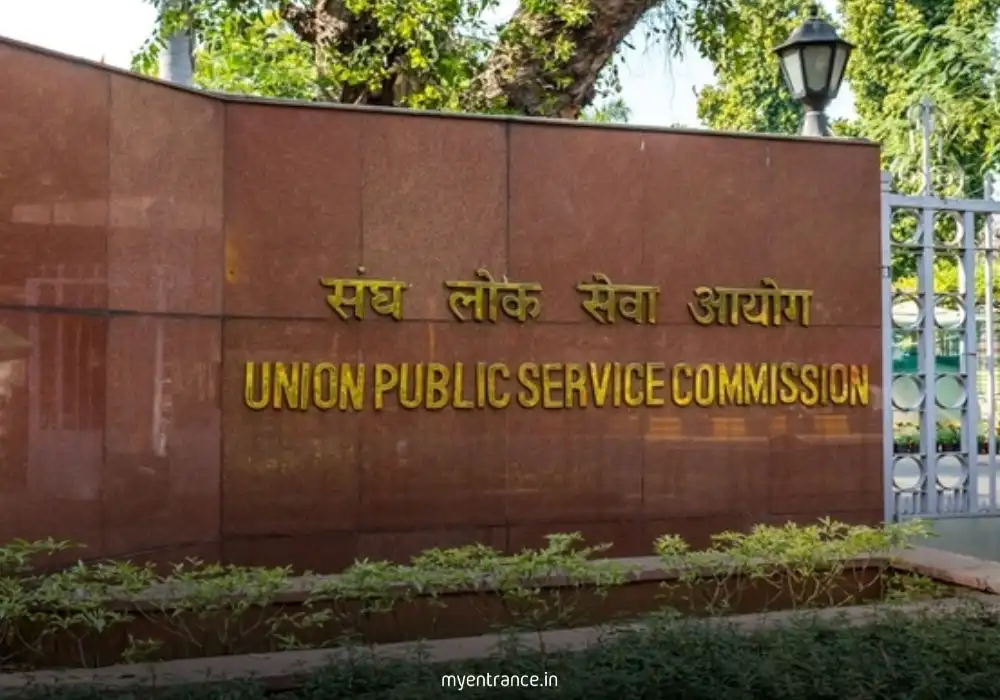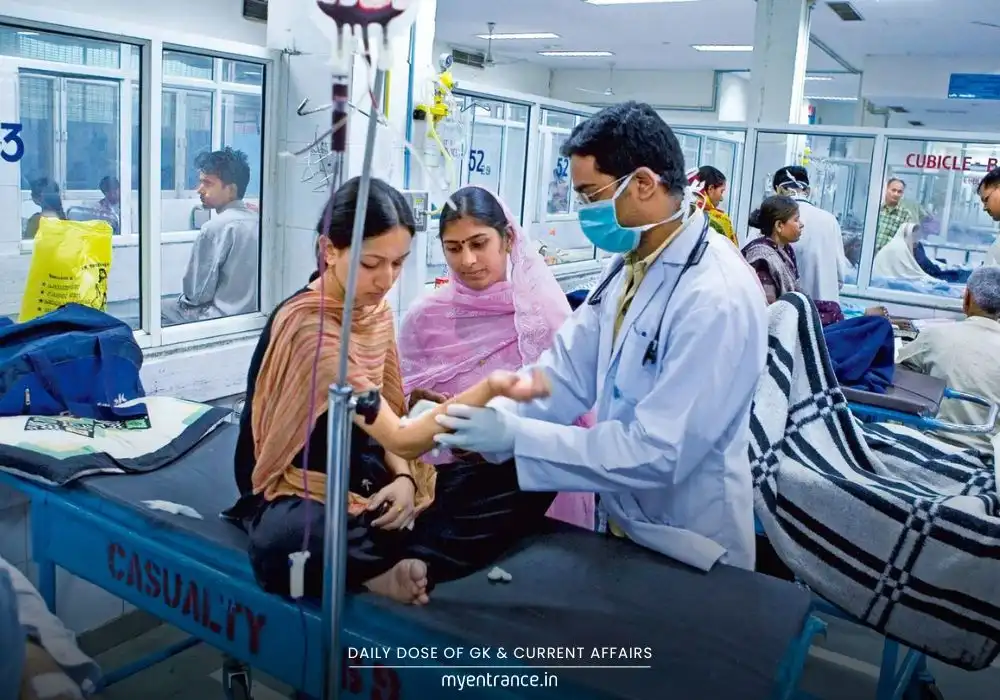Translate Language
Global Hunger Crisis 2025: 295 Million in Peril & What It Means for UPSC Aspirants
The Global Report on Food Crises 2025 exposes a grim reality: acute hunger surged for the sixth straight year, impacting 295 million across 53 nations. With India ranking 105th in the Global Hunger Index, this report is vital for competitive exams. Understanding its drivers and data is key to cracking questions on global affairs.

The Global Report on Food Crises 2025, coordinated by the Food Security Information Network (FSIN), delivers a stark warning. A record 295.3 million people in 53 countries endured acute hunger in 2024 – a rise of 14 million from 2023. Catastrophic food shortages reached unprecedented levels, with Nigeria (31.8M), Sudan (25.6M), and DR Congo (25.6M) accounting for 28% of global cases.
Top 10 Crisis-Hit Nations:
Nigeria: 31.8 million
Sudan & DR Congo: 25.6 million each
Bangladesh: 23.6 million
Ethiopia: 22 million
Yemen: 16.7 million
Afghanistan: 15.8 million
Myanmar: 14.4 million
Pakistan: 11.8 million
Syria: 9.2 million
Key Drivers:
Economic Shocks (inflation, currency collapse) drove hunger in 15 nations, including Afghanistan and Yemen (59.4 million affected).
Extreme Weather battered 96 million people, especially in Southern Africa and the Horn of Africa.
Conflict, poverty, and climate change collided in fragile regions, deepening malnutrition cycles.
Global Hunger Index (GHI) 2024 Highlights:
Published by Concern Worldwide and Welthungerhilfe, the GHI uses four indicators: undernourishment, child stunting, child wasting, and child mortality. The world scored 18.3 (“moderate”), but 42 countries face “alarming” hunger. Disturbingly:
Zero Hunger by 2030 is unattainable at this pace (projected 2160).
Six nations – Somalia, Yemen, Chad, Madagascar, Burundi, and South Sudan – have “alarming” GHI scores.
India’s Concerns: Ranked 105th (27.3 GHI score – “serious”), India trails neighbors like Bangladesh and Nepal. Critical issues include:
35.5% child stunting
18.7% child wasting (acute malnutrition)
Intergenerational malnutrition links to poor maternal health.
Why This Matters for Exams:
This report is essential for UPSC, SSC, KAS, and state PSCs because:
Covers GS Paper III (Food Security, Disaster Management) and Prelims current affairs.
Highlights India’s developmental challenges (malnutrition, climate resilience).
Data-driven questions on GHI indicators, report publishers, or top crisis zones are frequent.
Explains SDG-2 (Zero Hunger) delays – a recurring interview topic.
Connects geopolitics (e.g., Sudan conflict) with humanitarian crises.
Q&A for Competitive Exams:
Q1: Which organization coordinates the Global Report on Food Crises?
A: Food Security Information Network (FSIN) for the Global Network Against Food Crises (GNAFC).
Q2: India’s 2024 Global Hunger Index rank was 105. What was its score and severity level?
A: 27.3 – categorized as “serious.”
Q3: Name two primary drivers of acute food insecurity in 2024.
A: Economic shocks (inflation/currency collapse) and extreme weather events.
Q4: Which country had the highest number of people facing acute hunger in 2024?
A: Nigeria (31.8 million).
Q5: What percentage of Indian children under five suffer from ‘wasting’ according to GHI 2024?
A: 18.7% (reflecting acute undernutrition).
Get 3 Months Free Access for SSC, PSC, NIFT & NID
Boost your exam prep!
Use offer code WELCOME28 to get 3 months free subscription. Start preparing today!















